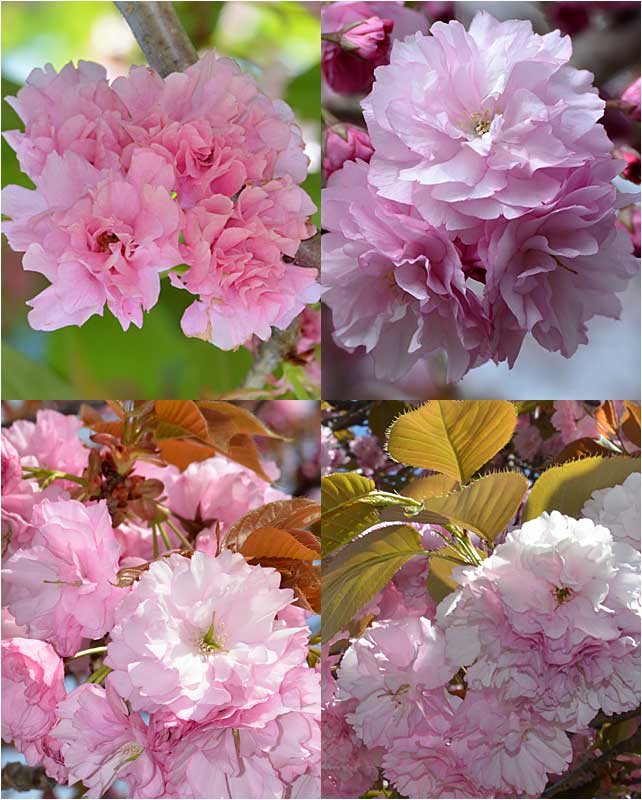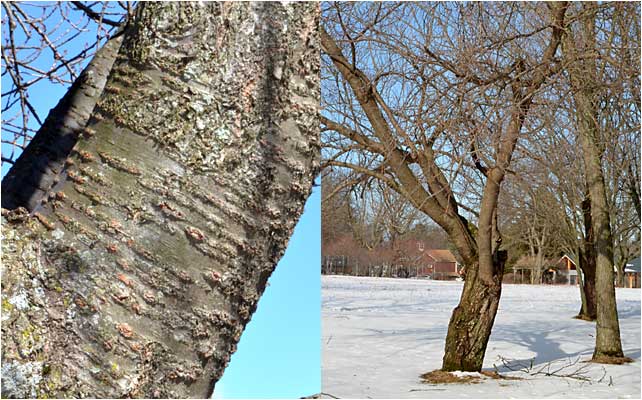41. KANZAN CHERRY
Prunus serrulata 'Kanzan'

The Kanzan Cherry is one of most planted non-native ornamentals in the U.S. It's contribution to the environment is negligible compared to a keystone native cherry species like Black Cherry. Still, in certain seasons it does put on a show, and it starts in Spring. Kanzan Cherries are among the last to display their flowers, but even the buds (pictured above) are fascinating to look at.
SPRING, PEAK BLOOM

The Kanzan Cherry tree is known for its bloom of double blossoms, and it is pretty spectacular, albeit short-lived. Peak time is usually the first full week of May, with some flowering on both sides of that time. The tree is sterile and does not produce fruit, but bees do visit during Spring. Typically, Kanzan Cherries are not long-lived, and it is a mystery how this one got to Westmoor. The best guess is Leila Hunter planted it in the 1960s or 70s, but that time frame would make this tree pretty old for a Kanzan.
SUMMER & FALL FOLIAGE

Summer foliage is that of a typical non-native fruiting tree. Fall foliage is usually reserved, but on occasion this tree can surprise.
BARK & WINTER HABIT

The bark is dark and laced with horizontal lenticels (pores) that aid in the transfer of water vapor, O2, and other gases. The winter habit is unremarkable except that the tree (and most mature Kanzan Cherries) does look ancient.